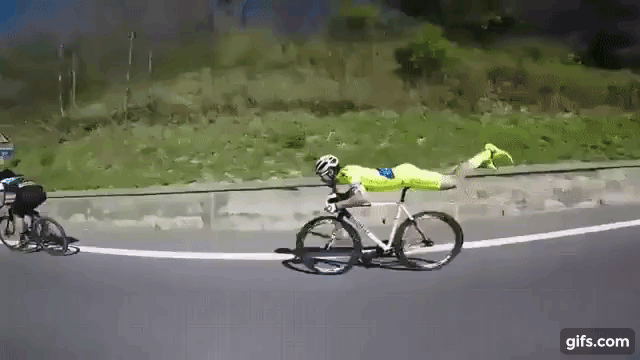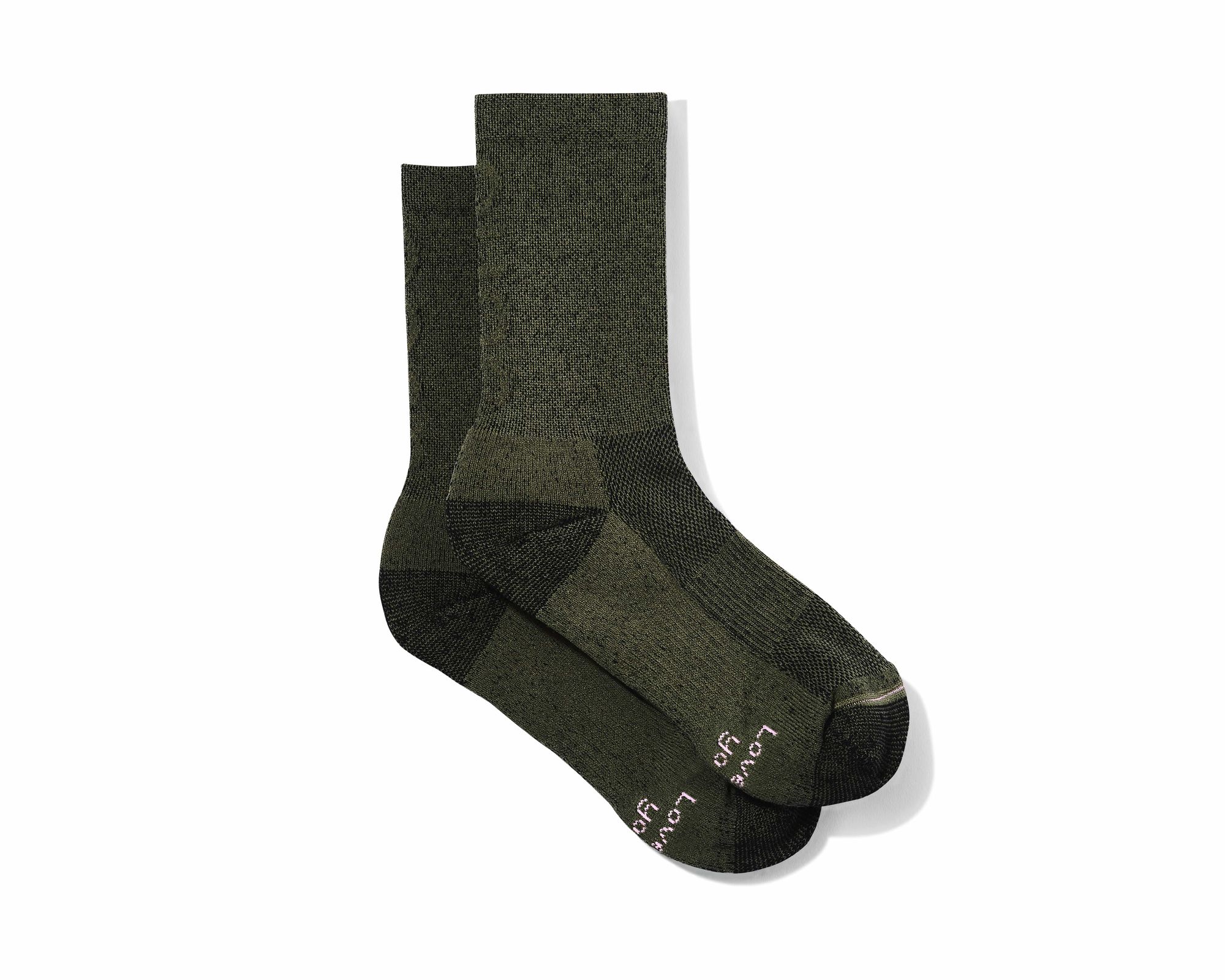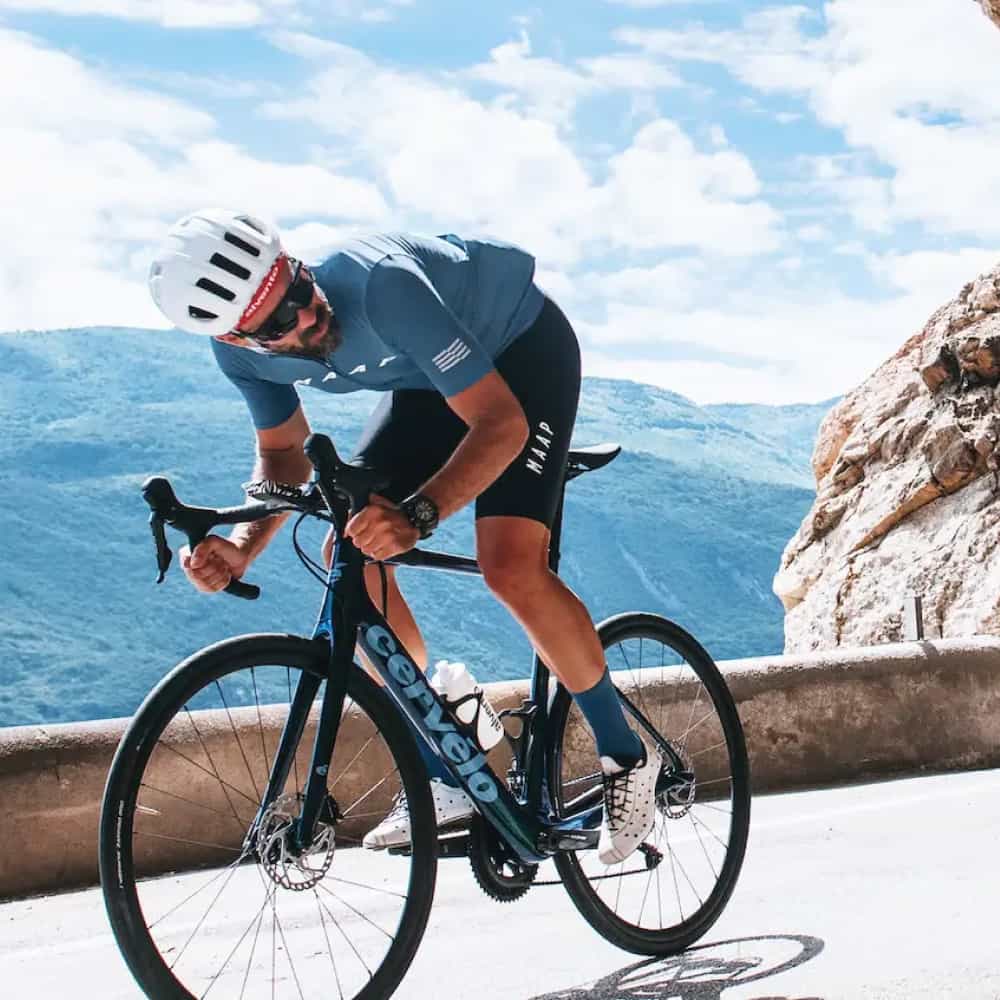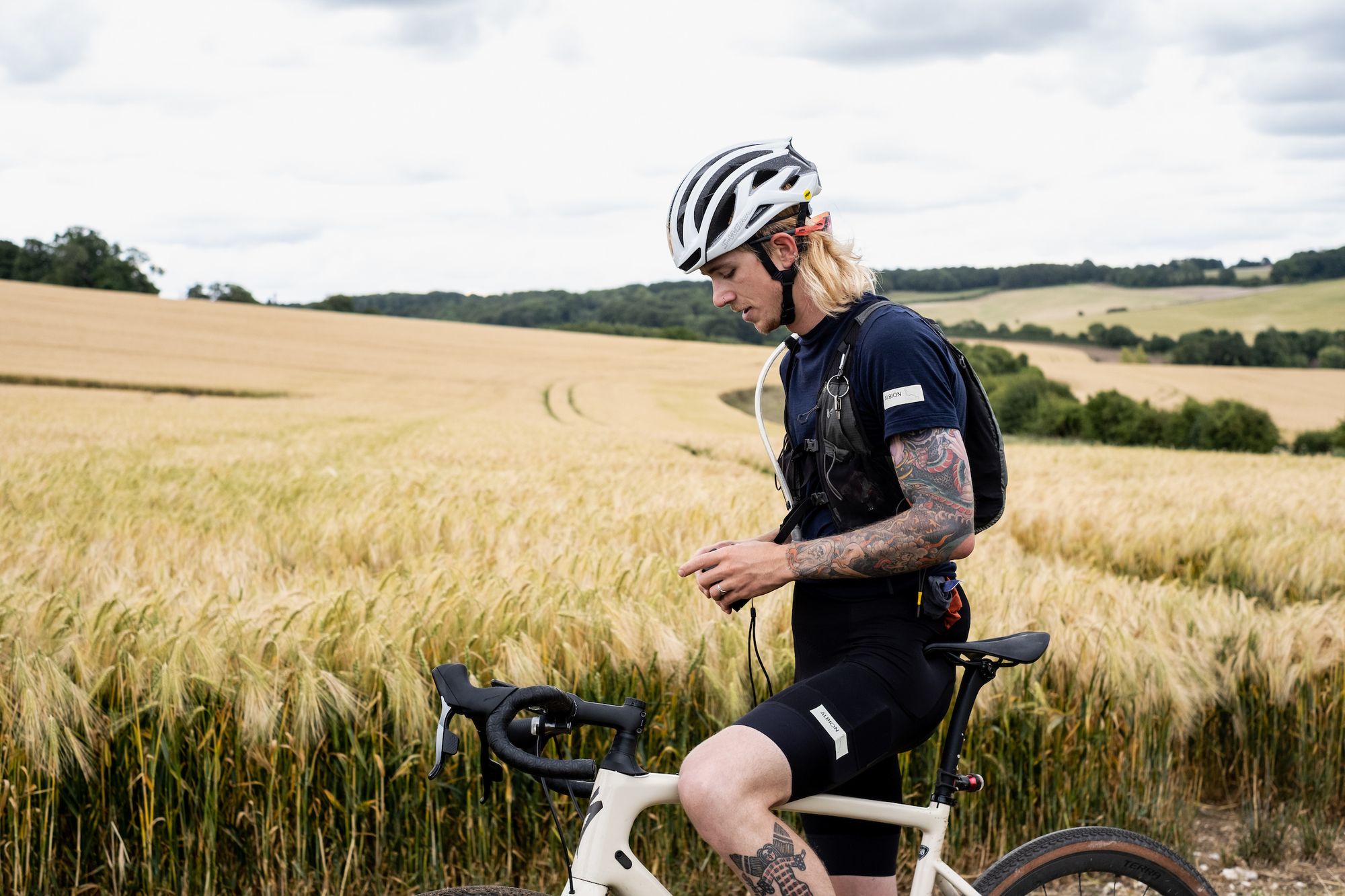Winter is the time of year when you’re most likely to wind up in the garage with your woolly hat on avoiding the ice and cursing the British weather. Here are some top tips to make sure you enjoy your time on the turbo and emerge in the spring a faster stronger athlete.
Do’s
1. Follow a structured plan to maximise gains

The advantage of being on the turbo trainer is that you can achieve levels of structure that are difficult if not impossible to complete out on the roads. Descents, traffic, road furniture all get in the way of hitting your exact numbers and timings for a big session. If you’re a coached rider your coach will have spent a long time planning your intervals so it’s important you get as close as possible to maximise your gains.
2. Entertain yourself to ride faster

Research suggests that listening to music improves your cycling time trial speed, so take advantage of it when indoors (see Atkinson 2004). Some may worry about listening to music whilst outdoors so if you’re resigned to the turbo then make the most of it.
Repeating the same playlist every time before a performance piece or race can have benefits as well. Timing your warmup to the rhythm of the music and building tempo towards the end will get you mentally as well as physically prepared for your efforts at just the right time.
The repeatability will give you confidence and familiarize your mind with what you’re about to put it through.
3. Hydrate and eat organically

It’s easy to forget. Take advantage of the fact you have the space to lay out real foods and that you’re less likely to fall off the turbo un-peeling a banana! Try to save yourself a few quid by not relying on convenience energy products like gels and bars.
4. Mix up your sessions and keep score

Break up the monotony of winter miles by shaking things up a bit. Experiment with different warm-up protocols or interval sessions to see which makes you go faster.
Use your training diary to monitor what you did and how you felt. Try to give it a numerical value such as ‘extended warmup to 15minutes felt 8/10 during efforts’. This way you can start to build a baseline picture over time of how your warmup effects your performance.
These objective numbers combined with your real training data such as training stress balance will help you more accurately predict overtraining and achieve a higher workload over time.
5. Cool down properly and come back stronger

For harder sessions where you exceed your functional threshold power (your 60-minute best effort power), a solid cooldown routine is vital to ensuring you can come back strong the following day.
Your cardiovascular system is the body’s way of clearing out lactate, the byproduct of anaerobic exercise. If your heart rate plummets whilst your legs are full of lactate it pools, has nowhere to go and can stay in your system for days. I’ve seen athletes with 3 times the baseline lactate of 4mmol three days after a road race.
The best way to prevent this from happening is to slowly step your heart rate down after your main set of efforts. Try to start your cool down just under your threshold heart rate (heart rate at FTP) and hold this for around 50% of the time you spent over FTP in your session. Then slowly step the heart rate down in increments of 5bpm for several minutes at a time until your cooldown is complete. This may take a while but you will feel the benefits in the subsequent days.
Remember, your next workout starts with the current one!
6. Use turbo time to experiment with new positions

If you are like me and constantly in pursuit of a more aggressive and aerodynamic race position then use the turbo as a time to experiment with what you can cope with.
The Wattbike is an ideal tool for this as you can see exactly when your pedal technique starts to break down using its polar view.
Try going lower on the front and see what happens. Find out if you get any aches or pains and see if your body adapts over time. Going lower doesn’t always mean faster, but as a general rule it will reduce your frontal area and help you punch a smaller hole through the wind. When you think that aerodynamic drag accounts for 80% of the power that you’re putting out then you realise how important it is to be as aerodynamic on the bike as possible without sacrificing power.
Find a middle ground that’s the optimum balance between being able to sustain power but being as aerodynamic as possible. The only way to truly know if you’re more aero is by paying the wind tunnel a visit or looking into companies that provide real-world aerodynamic testing.
Don’ts
1. Don’t use the Turbo as a security blanket

There’s no substitute for getting out on the roads on your real bike in your real position. After all, your events are in the real world not on a turbo!
2. Don’t use a repaired inner tube in your turbo tire
For a turbo trainer which connects your rear tire to a flywheel make sure it contains an inner tube free of patches and repairs. The friction causes the glue to melt and it may explode!
3. Don’t forget your thong and catch some wind

Without the breeze in your face, you might end up drenching your best bike in sweat and tears. This is never going to be good for it, so towel up, thong up and don’t make a mess!
A fan in front of you can help to cool you down even further during intense sessions.
4. Know your turbo
Don’t Rely on turbo trainers which estimate your power using flywheel speed and an algorithm.
They tend to suffer from drift during a session and can be inconsistent from day to day.
If you do want to gauge your efforts off them then make sure your tire pressure is the same every time and that the flywheel is pressed against the tire to the same strength every time. Perhaps train to heart rate and just take note of your power for these sessions.
Where possible use a real power meter or a turbo trainer with a built-in strain gauge such as a Wattbike or Wahoo kickr (Snap or regular).
5. Don’t worry about doing the same volume

A general rule of thumb is that 50 minutes on the turbo is the equivalent of 60 minutes on the road when you factor in time spent not pedalling for corners, descents, traffic lights etc.
Or just take the bonus training effect you get from completing your training hours with continuous pedalling.
6. Don’t confuse spin classes with turbo training

Spin classes are great for your average gym goer but if you’re looking to progress on the bike you’ll need to follow a progressive and structured training plan designed around your current ability as an athlete.
Going into a session with no idea what kind of training zones you’re going to be working in or how hard it’s going to be, makes it impossible to train sensibly.
If your main event of the year involves riding at 140rpm and changing your hand position every 4 seconds then your spin class might help you. But if it doesn’t then you’d be far better off making sure your training is as specific as possible to your event. Don’t even get me started on Hip Hop Spin Class!
The turbo is a great way to keep training hard over winter and be ready for when the snow melts and it’s safe to brave the outside world once more. Just make sure your training is specific and designed around making you a better cyclist.
The turbo is not a chore, it’s an opportunity to improve!






